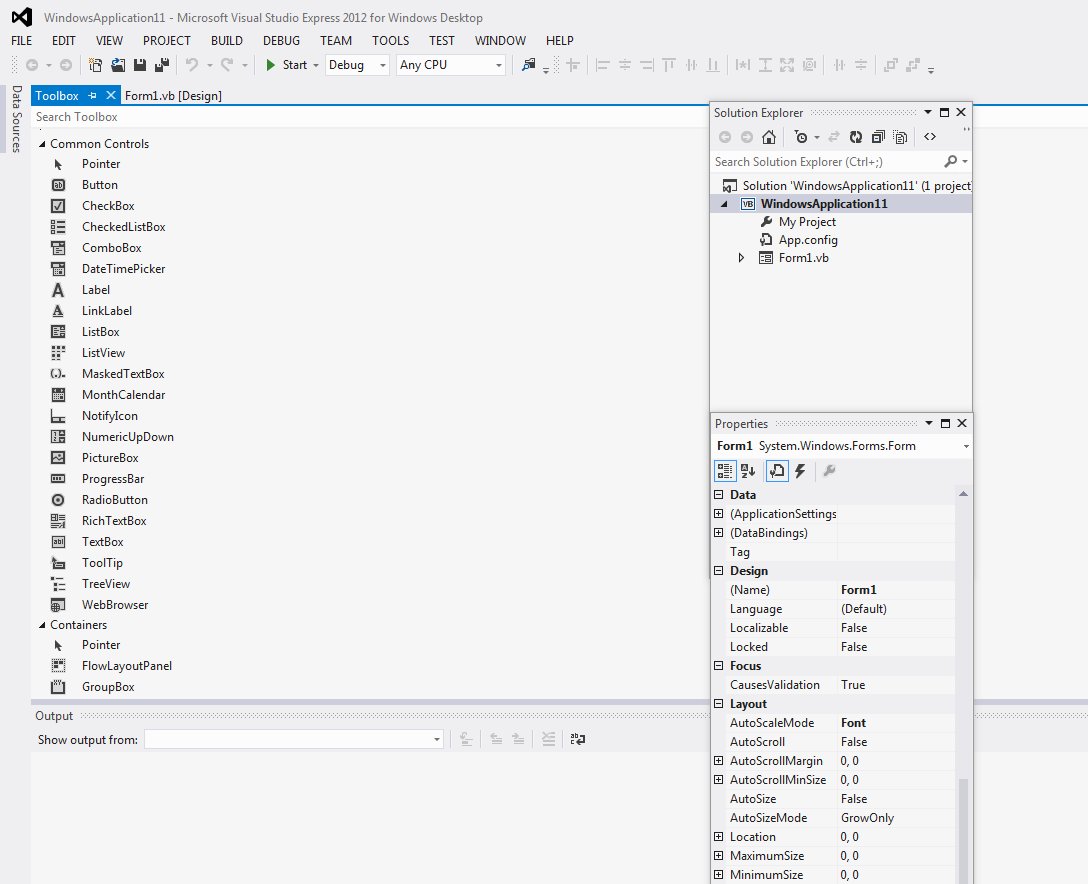The Controls in Visual Basic 2012 are objects that can be placed on the form to perform various tasks. We can use them to create all kinds of Windows applications. Figure 2.1 shows the toolbox that contains the controls of Visual Basic 2012. They are categorized into Common Controls, Containers, Menus, Toolbars, Data, Components, Printings and Dialogs. At the moment, we will focus on the common controls. Some of the most frequently used common controls are Button, Label, ComboBox, ListBox, PictureBox, TextBox etc. To insert a control into your form in Visual Basic 2012 IDE, you just need to drag the control from the toolbox and drop it into the form. You can reposition and resize it as you like. Let's examine a few programs that made use of Button, Label, TextBox , ListBox and PictureBox . You don’t have to worry so much about the code yet because we will explain the program syntax as you progress to later lessons.

When you click on the Toolbox tab, the common controls Toolbox appears, as shown in Figure 2.2.

To create your first program in Visual Basic 2012, drag the button control into the form, and change its default Text Button1 to OK in the properties window, the word OK will appear on the button in the form, as shown in Figure 2.3.

Now click on the OK button and the code window appears. Enter the code as shown in Figure 2.4

When you run the the program and click on the OK button, a dialog box displaying the "WELCOME TO VISUAL BASIC 2012" message will pop up,as shown in the Figure2.5. The argument Title: is to assign the title of the dialog box.:

Next we shall show you how to create a simple calculator that adds two numbers using the TextBox control. In this program, you insert two textboxes , three labels and one button. The two textboxes are for the users to enter two numbers, one label is to display the addition operator and the other label is to display the equal sign. The last label is to display the answer. Now change the label on the button to Calculate,then click on this button and enter the following code:
Private Sub Button1_Click(ByVal sender As System.Object, ByVal e As System.EventArgs) Handles Button1.Click Dim num1, num2, product As Single num1 = TextBox1.Text num2 = TextBox2.Text product = num1 + num2 Label1.Text = product End Sub
When you run the program and enter two numbers, pressing the calculate button can let you perform addition of the two numbers, as shown in Figure 2.6.

Copyright©2008 Dr.Liew Voon Kiong. All rights reserved |Contact|Privacy Policy